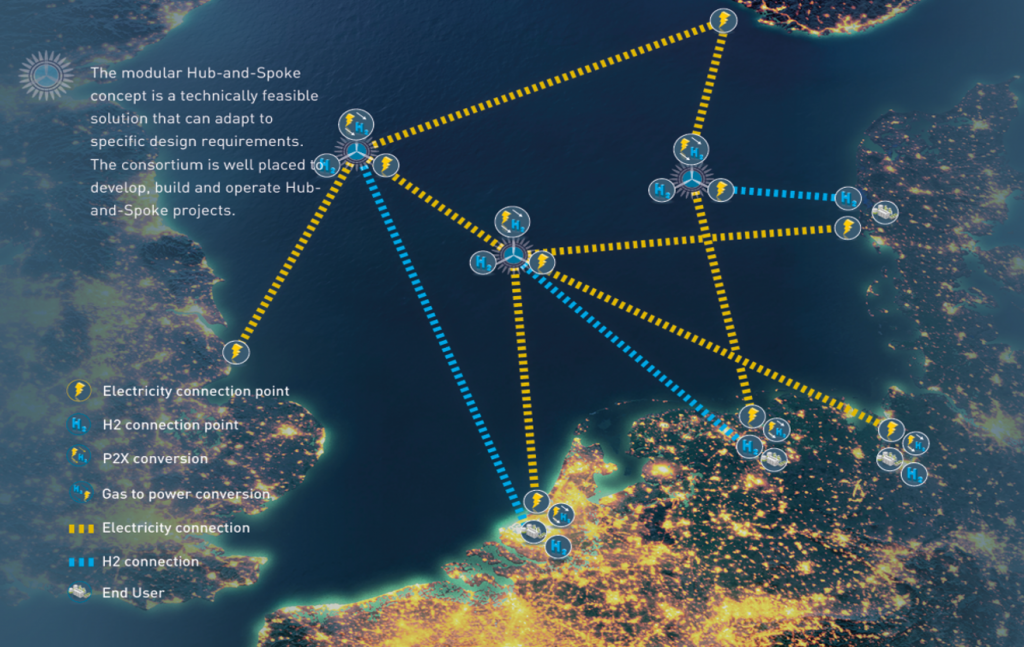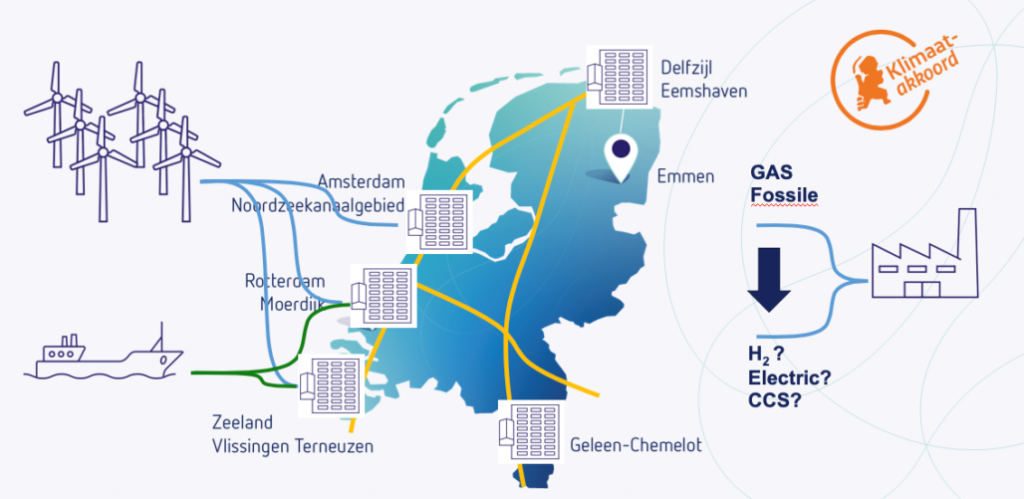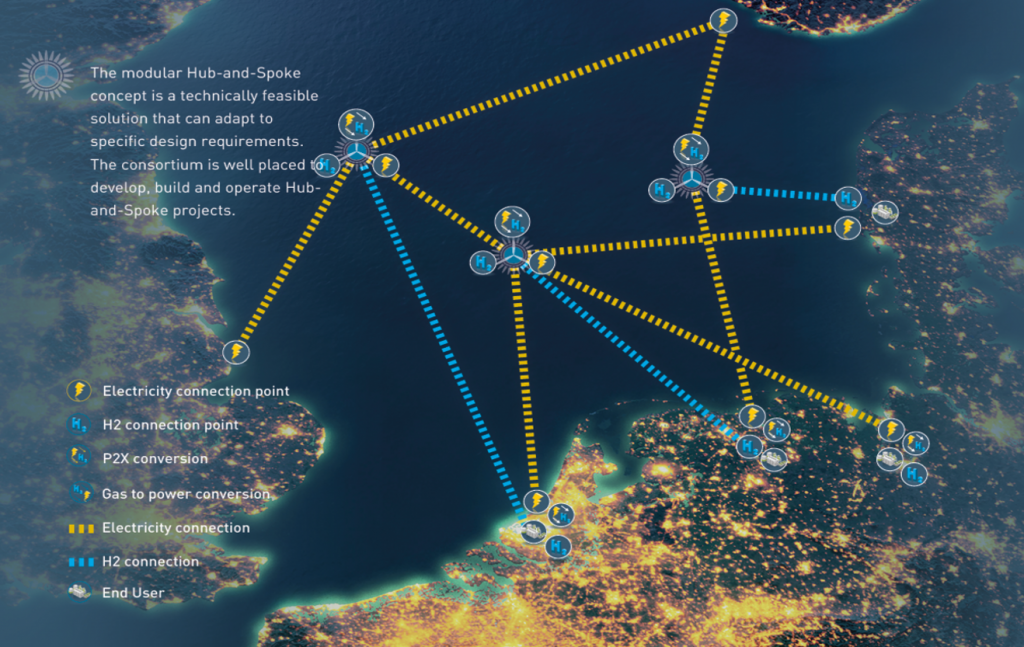With the goals of the Paris agreement established and set in motion, great interest has developed in the potential offered by hydrogen. A key focus is the coupling of renewable energy and hydrogen production to enable wider market access and energy storage. Many projects have begun using offshore wind energy to power large scale electrolysers that produce green hydrogen. Regions across the North Sea are being seen as an ideal location due to the consistent offshore wind profiles and many hydrogen users situated along the coastline of the sea’s many connecting EU countries.
One such project is being developed by the North Sea Wind Power Hub (NSWPH) consortium, made up of Tennet, Energinet, Gasunie and the Port of Rotterdam. When largescale offshore wind farms are developed, most likely after 2030, the consortium aims to position several energy collection “hubs” throughout the North Sea. These will have the capability of converting electrical energy to hydrogen and potentially other intermediate chemicals. Energy will be moved between hubs and the shore as either hydrogen or electricity depending on the connection type. There is plans for a gradual roll out of 10 to 15 GW sized hubs, aiming to implement 180 gigawatts offshore wind by 2045

A further group of projects taking advantage of the North Sea’s renewables are funded by the HydroHub innovation program. These projects aim to develop a conceptual design and cost estimation methodology for large scale electrolysis. This will be implemented across the industrial regions of the Netherlands. An initial 1 GW electrolyser plant is planned for start-up in 2030.

Indeed, the Dutch have multiple 100MW+ electrolyser projects being developed along their coast. The national gas company, Gasunie, are playing a leading role in a number of theseprojects – both in their development and in the piping of hydrogen to application points using existing natural gas infrastructure. They have also developed a 2050 plan with the national electrical TSO, Tennet, which outlines coordinated moves to sustainable energy and hydrogen.
On the other side of the sea, the UK has also been investing in offshore wind based hydrogen applications. The Dolphyn project, lead by ERM, has been awarded £3.1 million in early 2020 by the UK government. The project will produce hydrogen on integrated floating turbine/electrolyser platforms offshore with the hydrogen transported to land via pipeline. Work on the initial 2MW prototype facility will start in March 2021.

These projects developed in the North Sea give great optimism for Ireland’s hydrogen future. The development of floating platforms – both for wind and solar – widens the potential area available for deployment around the Irish coast as well as lowering the cost to execute. As this production becomes more economic, new value chains will arise leading to a significant decrease in Ireland’s CO2 emissions, as well as delivering significant skilled jobs. Observing how countries such as the Netherlands develop their hydrogen strategies will allow Ireland to shorten technology time to market and to target policy and support in key areas.
Small scale, community driven, hydrogen enabled projects are already popping up in coastal and island communities – such as the ‘VISION’ project which is seeking funding for hydrogen plans on Valentia. Scale will quickly come to match the North Sea projects, but Ireland has an opportunity to derive national economic and local community benefits if support mechanisms are crafted carefully. Some communities, such as Valentia, are pioneering a path which needs nurturing and support. The planned Climate Action Fund support programme offers an opportunity to deliver such backing for all these initial projects. Let’s hope our civil servants and politicians can help deliver on hydrogen’s promise!
Ian Williamson,
President European Hydrogen Association





